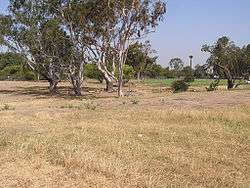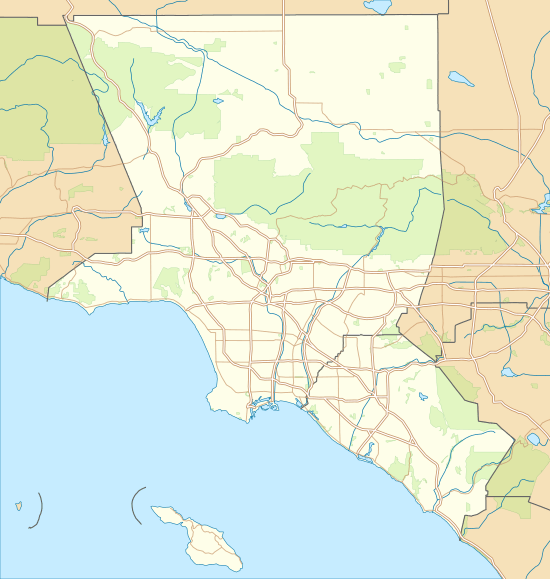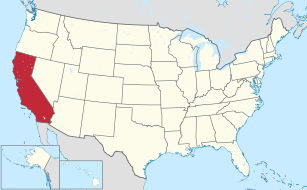Puvunga
Puvunga (alternate spelling: Puvungna or Povuu'nga) is an ancient village and sacred site of the Tongva nation, who are the indigenous peoples of the region around Los Angeles, California, and the Acjachemen who are the indigenous people of Orange County.[1] The Tongva referred to Puvunga as the "place of emergence" and it is where they believed "their world and their lives began."[2] Puvunga is believed to be the birthplace of Chingishnish in Tongva mythology, "the prophet or deity who appears at Puvunga after Wiyot, the creator, has been killed, and tells the assembly what they must do in order to feed themselves."[3]
Puvunga Indian Village Sites and Boundary Increase | |
 The Puvunga site on the campus of Cal State Long Beach | |
   | |
| Nearest city | Long Beach, California |
|---|---|
| Coordinates | 33.785°N 118.121°W |
| Architect | Tongva |
| NRHP reference No. | 74000521 (original) 82000429 (increase) |
| Significant dates | |
| Added to NRHP | January 21, 1974 |
| Boundary increase | May 22, 1982 |
The site is located near the Earl Burns Miller Japanese Garden on the campus of present-day California State University, Long Beach along the banks of a now channelized creek, about three miles (5 km) from the Pacific Ocean. A portion of the site (which is unmarked with a sign or other informational marker) comprises a natural area located at the edge of campus, near a parking lot. At one time this site had a natural spring, and the location is sometimes referred to as Puvunga Spring. Another similar (but larger) Tongva site is Kuruvungna Springs on the grounds of University High School in Los Angeles.
History
Since the 1960s the Tongva people have sought to preserve the Puvunga site from development, and it was listed on the National Register of Historic Places in 1974 . However, the university has challenged this designation, claiming they were not consulted when the application was filed. Ethnohistoric evidence clearly identifies Puvungna with Rancho Los Alamitos, a portion of which became the Cal State Long Beach campus. More than a dozen archaeological sites spread over an area of about 500 acres (2.0 km2) on and near the campus have been identified as Puvungna village sites. Most of these have been destroyed by development.
In 1972, campus workmen uncovered portions of an Indian burial on one of these sites, LAn-235, located on the western edge of campus. These remains were placed in CSULB's archaeology lab. A few years later, LAn-235 was placed on the National Register of Historic Places to "represent" Puvungna "as a means of perpetuating the memory of these native peoples and their religion, and as an aid to the program of public education." Two other sites were included in the National Register: the adjacent LAn-234 and LAn-306, located just east of campus on the grounds of the historic Rancho Los Alamitos.
In 1992, when the university began its first attempts to build a strip mall on this last undeveloped portion of the campus, the Tongva people initiated protests and filed a lawsuit which has temporarily stalled any construction. The site remains as an undeveloped grassy area with a few trees.
External links
See also
References
- Boscana, 1846 - Chinigchinich – A Historical Account of the Origin, Customs, and Traditions of the Indians at the Missionary Establishment of St. Juan Capistrano, Alta California Called the Acagchemem Nation
- Greene, Sean; Curwen, Thomas (9 May 2019). "Mapping the Tongva villages of L.A.'s past". LA Times. Retrieved 19 June 2019.
- Loewe, Ronald (2016). Of Sacred Lands and Strip Malls: The Battle for Puvungna. Rowman & Littlefield. p. 26. ISBN 9780759121607.


